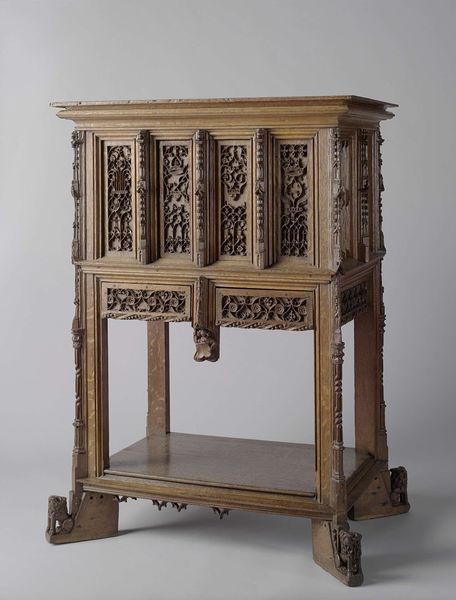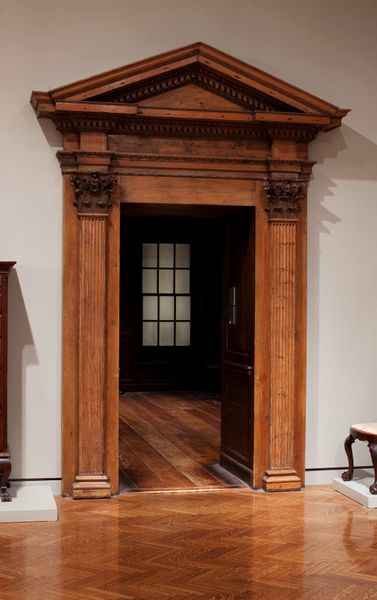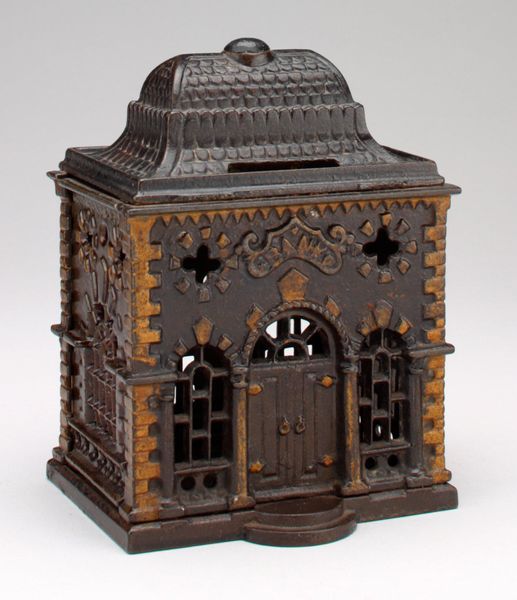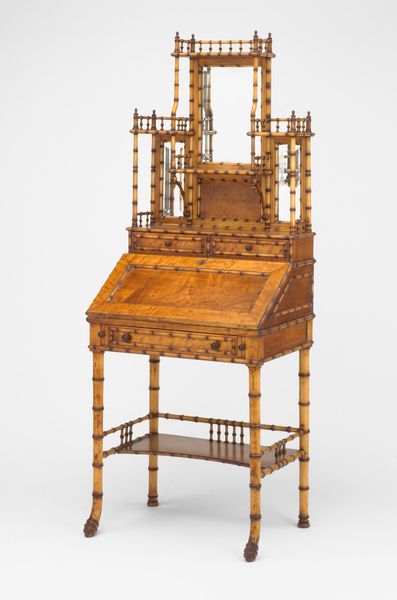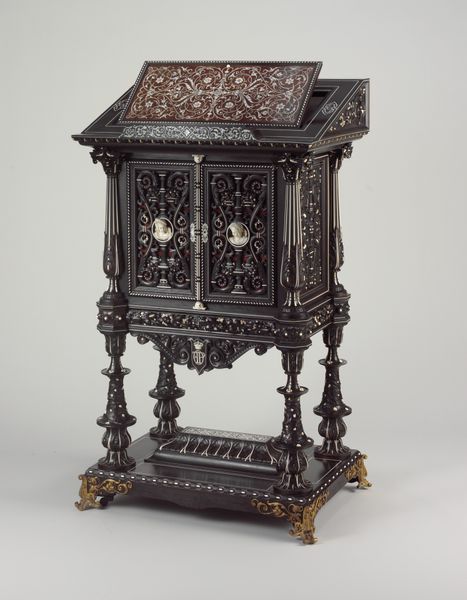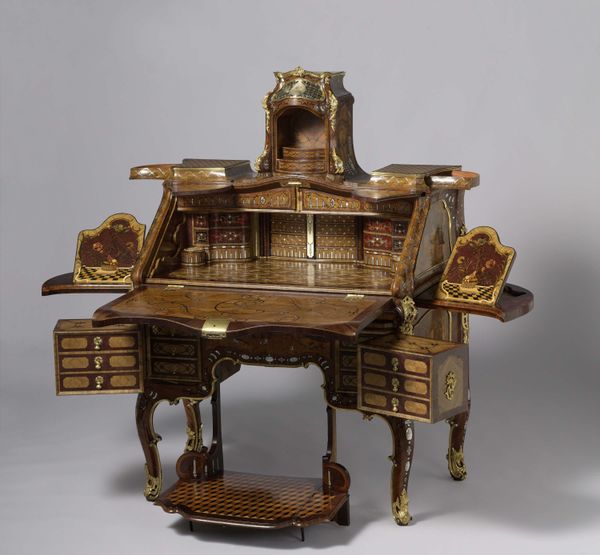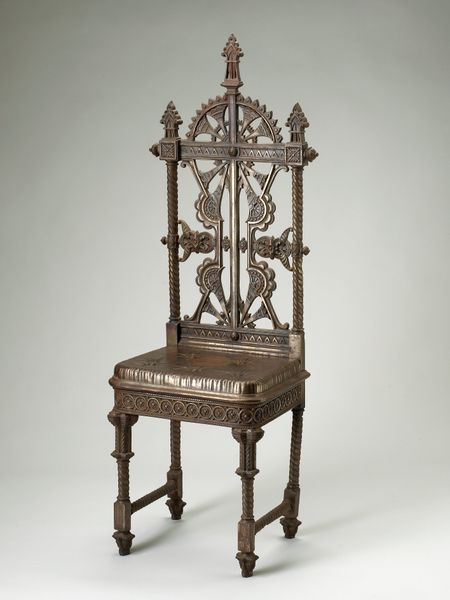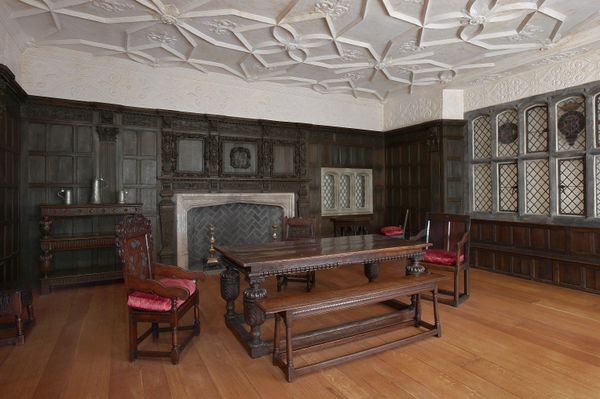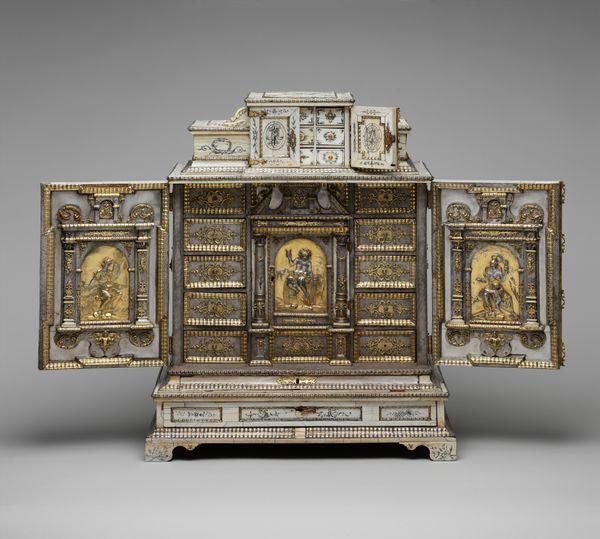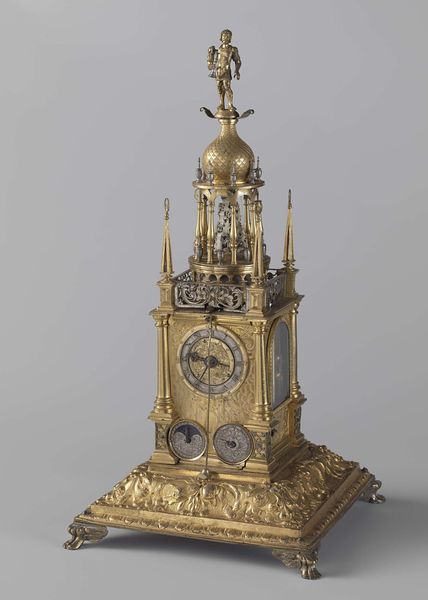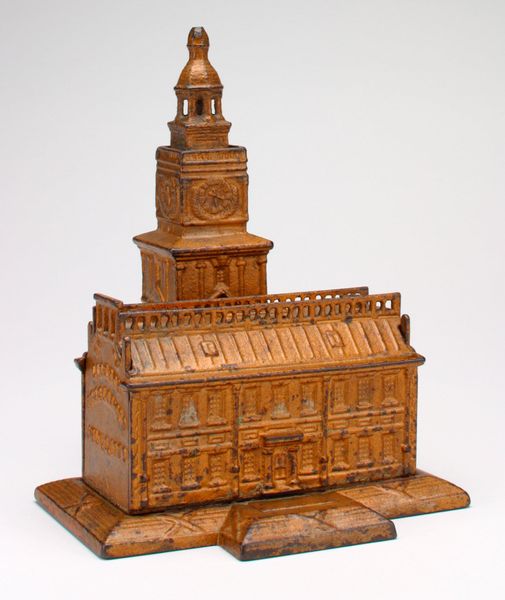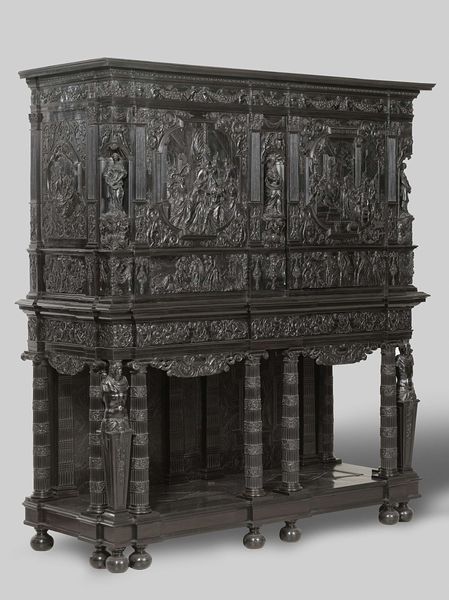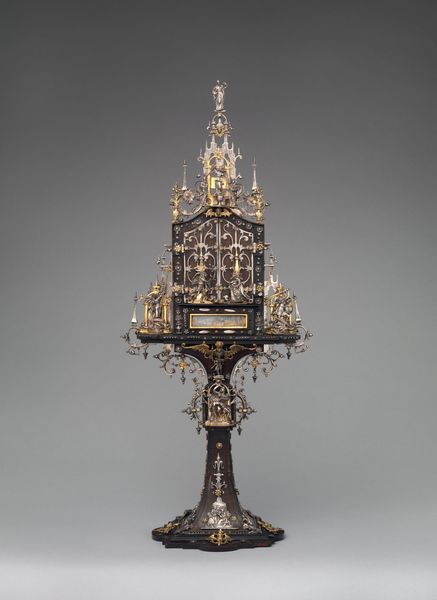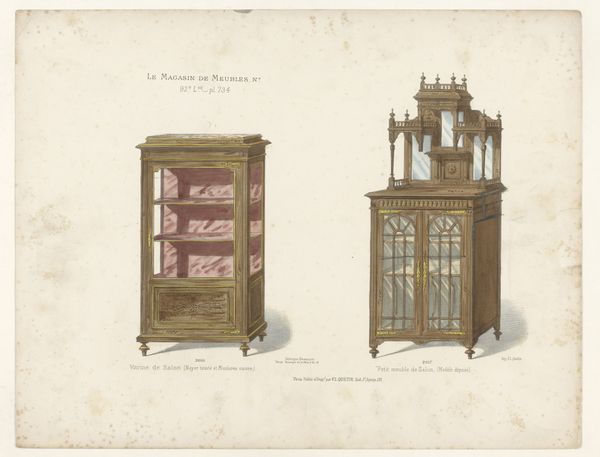
Ciborium 1150
sculpture, architecture
medieval
historic architecture
form
traditional architecture
geometric
sculpture
medieval-art
architecture
Dimensions: Overall: 226 x 93 1/4 x 93 1/2 in. (574 x 236.9 x 237.5 cm)
Copyright: Public Domain
Editor: Here we have the "Ciborium," dating back to 1150, now residing at the Metropolitan Museum of Art. It was created by Nicolaus Ranucius and his sons. Its structure feels so…lofty, and geometrically imposing, yet delicate. What can you tell me about it? Curator: It's a fascinating example of medieval art. Let's consider the context: this was a period deeply shaped by religious beliefs, impacting all forms of artistic expression. Now, this ciborium wasn't just a beautiful object, but it also reflects the very gendered history of the church. Ciboriums served as canopies over altars, often representing a sacred space, literally and figuratively sheltering the sacrament. The power dynamics in who got access to these spaces—who was allowed within the ‘shelter’—is vital. What do you think that might reveal? Editor: Hmm, that it represented a deliberate restriction of women and their representation, or lack thereof? Curator: Precisely! It prompts a powerful question: Whose stories and experiences are being sanctified and protected and, equally important, whose are being excluded? Think about the historical suppression of women's voices within religious institutions during this time and how the creation of art functioned within the status quo. Editor: I never considered art from a place of systematic cultural gatekeeping, but that's a compelling thought! Curator: Thinking intersectionally allows us to ask who commissioned it, for what purpose, and what narratives were privileged in its creation. Considering all those layers helps us deconstruct the symbol's function within historical power structures. Editor: It really gives the artwork another life, understanding art from that historical lens. I appreciate the new way to think of analyzing art, and cultural symbolism! Curator: Indeed. It becomes a powerful tool for questioning established narratives and giving voice to marginalized perspectives through the art.
Comments
No comments
Be the first to comment and join the conversation on the ultimate creative platform.
